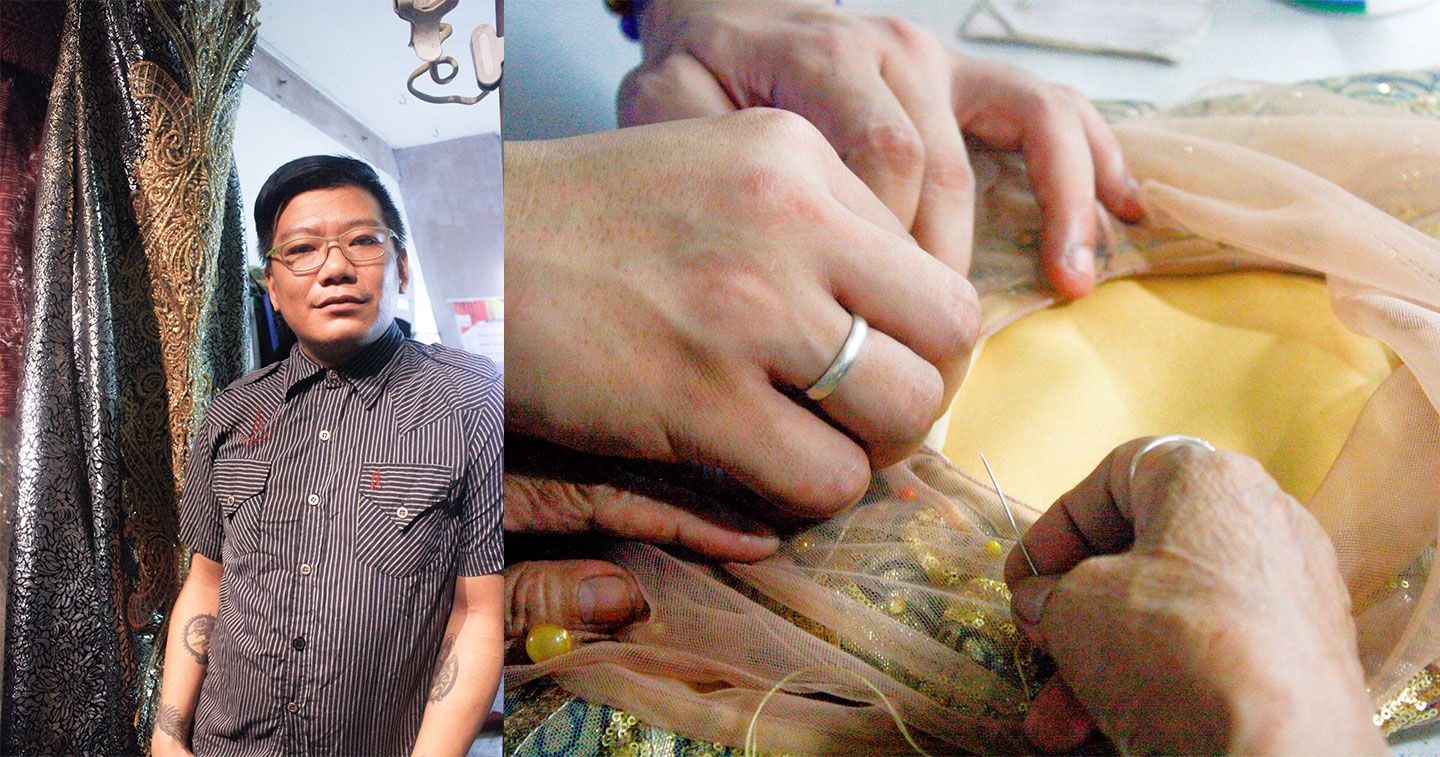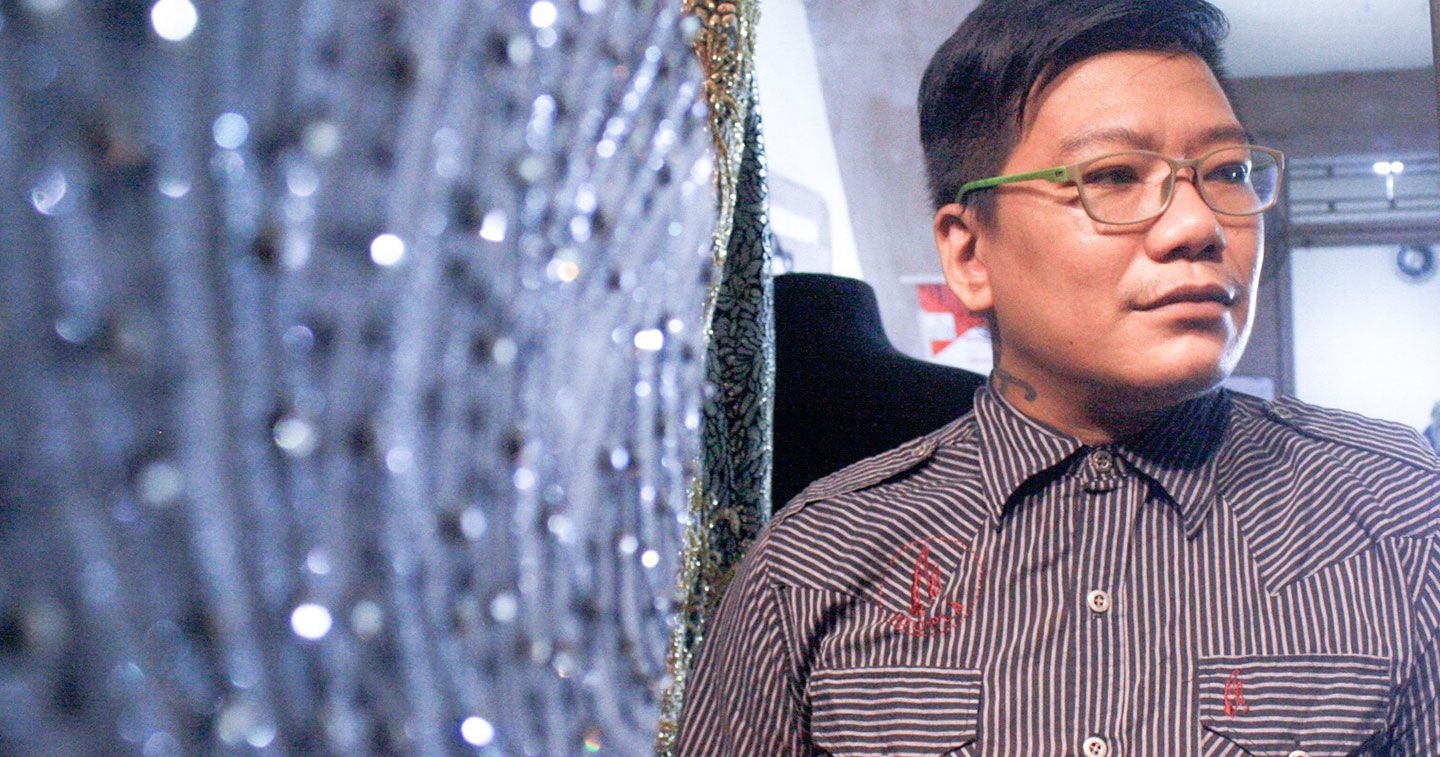MANILA, Philippines – Santi Obcena met me outside his https://www.adobomagazine.com/wp-content/uploads/2024/01/Addressing-Creative-Limitations-in-the-Malaysian-Film-Industry-HERO-1.jpg. He was carrying two big striped plastic bags filled with fabric, buttons, beads and whatnot from Divisoria. It was one week before Ternocon, and House of Santi is more cluttered than ever. It is narrow in width but elongated enough to house two sewing machines, variants of mannequins, and one long rack filled with his creations in progress.
Coming from the original batch in 2018, this edition of Ternocon calls for the same, if not a higher level of excellence. The renowned designer is making 18 pairs of terno, including those that will be worn by the curator of the Ayala Museum, Ditas Samson; Project Manager of Ternocon, Chinggay Bautista; performers Bituin Escalante and Frenchie Dy; and premier all female choir Musika Filipina.
His bold statement,“There are no two ternos we design that are the same,” would make one raise an eyebrow if it is, with terno’s strict silhouette, at all possible. But it’s not just a silhouette that one thinks of when Filipiniana is within earshot.

He explains that terno is a descendant of the traditional traje de mestiza with the panelo or loose sleeves and therefore is not an original piece of clothing but rather a personal and evolved attire that makes it unique.
“Terno is something that chronicles the evolution of women over time,” he declares.“How the sleeve rose–something that was submissive and pointing down–into something that holds her head high up in the air and will not go down again.”
Stepping into the House of Santi is like being inside of Santi’s mind, self-admittedly disorganized but every corner bathed in stories and characters.
“Our ternos are very bendable, you can pick it up, pack it in a suitcase, travel to the other end of the world and it still stands, and that is our interpretation of the women we dress.”
Santi’s ternos are as beautiful as they are functional. He took one butterfly sleeve in his hand and ceremoniously snaps and twists it, only to return to its upright form. Having dressed the country’s best choirs that often travel abroad to compete–Philippine Madrigal Singers and the UP Singing Ambassadors among them–he makes sure that a dress can still stand after surviving the hours journey of air travel.
“Pardon my language, but it is as upright as a potent male phallus.”
He lights a cigarette and puffs a cloud of smoke, recalling some of the best years of his life spent in the Philippine High School for the Arts. He was a folk dance major and his professor then, Ronnie Mirabuena, paired them up with visual arts major students to re-interpret the Philippine National Attire.
“I think that’s when my interest in fashion started,” he confesses. “It was interesting. I like clothes, I liked the idea of clothing being an expression of oneself and one’s culture.”
A spark of interest led him from the mountains of Makiling to the gates of College of Saint Benilde to take Design and Visual Mechandising in college. It was not long before he started making the costume design for theater plays by PETA; participating in the ASEAN Conference, and eventually making it into the Philippine Fashion Week.
Santi would disagree when people would view the elements of Terno as a flamboyant butterfly sleeve. “It’s very commanding, it’s very armorial.”
“If you don’t know history, if you don’t know how women think, and you don’t know how women are, and you don’t know how women move, then it will always be just a sleeve for you.”

This is at the top of his designing cap when he creates something new—always honoring the Filipina, the sacred woman. “The terno stands because it stands for women.”
This character of the terno has inspired Santi to wear one of his own: Salasag (salamangka and kalasag or magic and shield). This is his way of borrowing the power and the magic of women, an homage to the enduring and resilient women that have worn their pieces.
“I am sure that there are people who think that terno has a dark historical connotation because the wife of some tyrannical dictator wore it. To that I say: the terno has always been iconic with or without her.”
Project Runway
In his more youthful years, he had also applied to join Project Runway. It took him three times to get in in 2009. His only hope was to avoid being eliminated first but he ended bagging the second runner up place. At the moment, he felt that the universe had hated him but looking back, he says, “If I had won, I wouldn’t be this discerning.”
“I had ideas inside my head that I wanted to execute and Project Runway gave me a platform to shout it into the void in a more effective way.”
Creating with Purpose
This year, Santi came back Ternocon as an alumnus. Last year, he was one of the winners, 2nd runner up for the Balintawak category in specific. Definitely a at the top but far from the peak of his career, he was honored to return home, and “…educate the next wave of terno designers, a younger generation of designers who will re-envision and push it further than ever before.”
“I want to teach kids how to make proper collections. I want to teach them how to be ethical, how to be substantial.”
But more than the designers, Santi believes that the bloodline of his craft are the manangs. In the near future, he would want to have a creative space that will be an alternative school and training ground for the next-generation-manangs.
“In the same way that the agricultural industry is struggling to find its next generation of farmers, at one point, the fashion industry will suffer great losses because it did not train the next generation of manangs.”

Manangs, or the tailors that pedal. pin. cut. and sew the dresses are no staffers for Santi. In fact, the very reason why he calls it The House of Santi, is precisely because they are functioning as a family who share each other’s grievances, who make gossip and small talk in the afternoon, and above all, who collaborates to make the dresses come to life. He injects, “The label on the clothes may be my name, but it would not happen without them.”
As artisans, he holds manangs with the highest regard to the level of the weavers of baskets, the embroiders of the Barong Tagalog, the craftswomen who make the banigand abanico. In short, they are a very integral part of the Philippine culture.
“Fashion being an art industry heavily relies on people who give birth to addition. Because the art industry will not survive if it is only for artists, it is also with artisans who give birth to their ideas and create something that inspires the next generations.”
“Our job is to put up a structure for the next one (generation). Because if we don’t, there will be no Philippine fashion history, there will be no manangs, there will be no discipline. There will be no system.”
With this conviction, he vows, “I will make sure that we will have a whole generation of manangs who are ready and who will bring to life these crazy, stupid ideas that designers have.”
This year’s edition of Ternocon took place this weekend at the Cultural Center of the Philippines. Apart from the competition, there is also an exhibition: Salvacion Lim Higgins Terno. Among those in exhibit are the rayon satin terno modeled by Carmen Guerrero Nakpil in 1948 during the first Manila Carnival after WWII; French heirloom lace convertible terno created for first daughter Linda Garcia Campos for a state visit in Washington in 1958—a terno with sleeves that can be detached to become strapless; a rayon taffeta terno for first lady Linda Campos in the 1950s, and; a reproduction of a formal daytime terno for first lady Leonilla Garcia also in the 1950s.
Photos by Nina Venus










